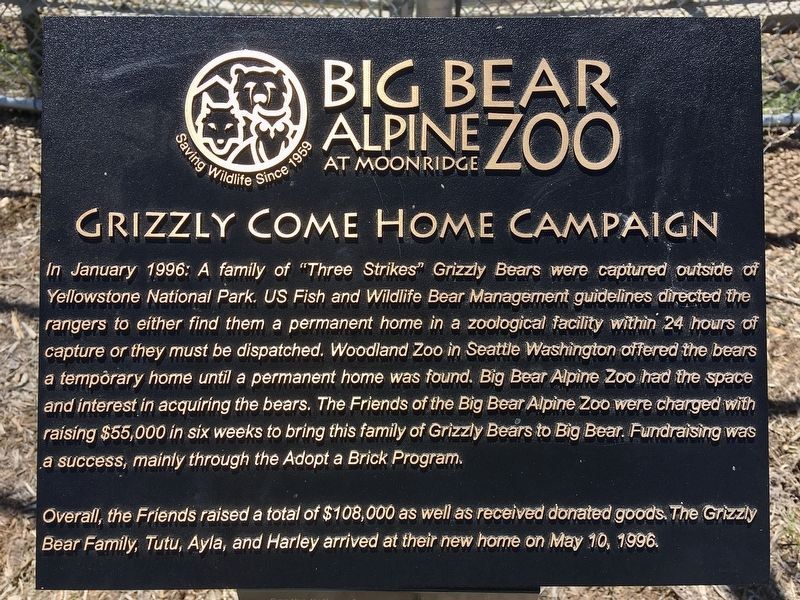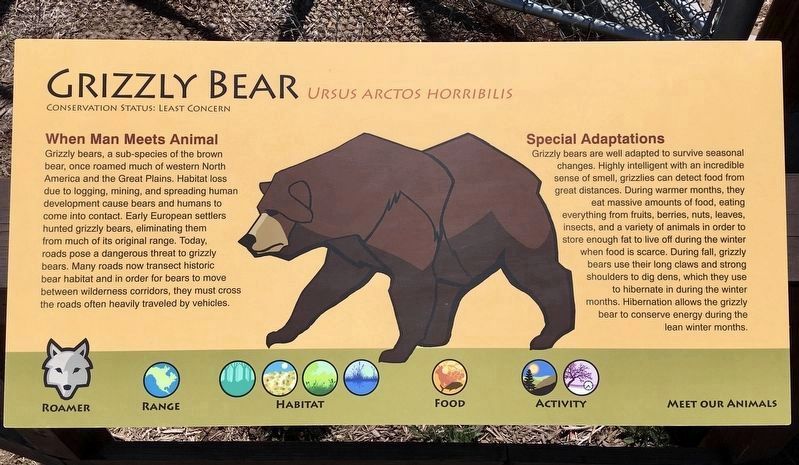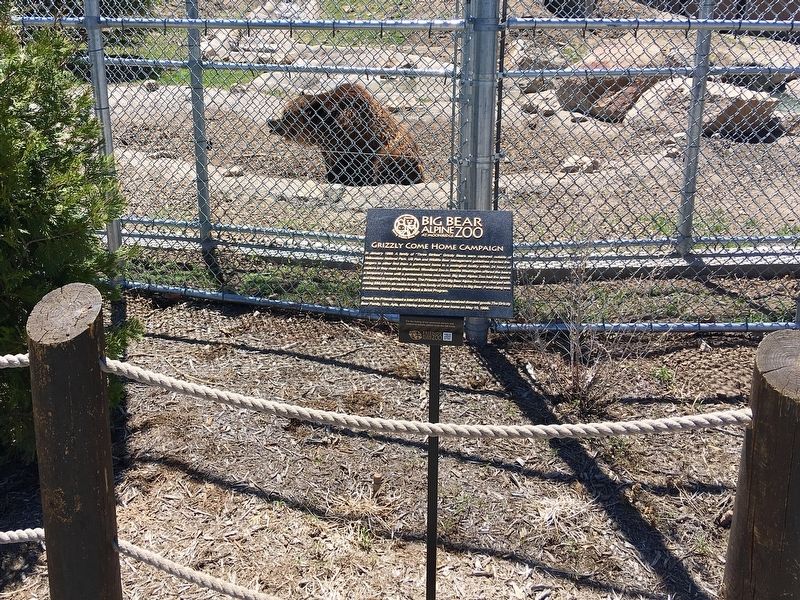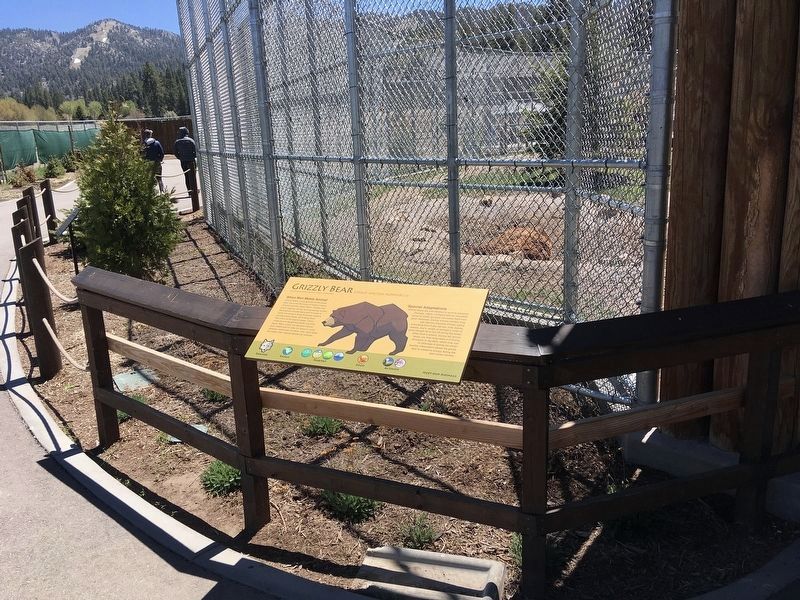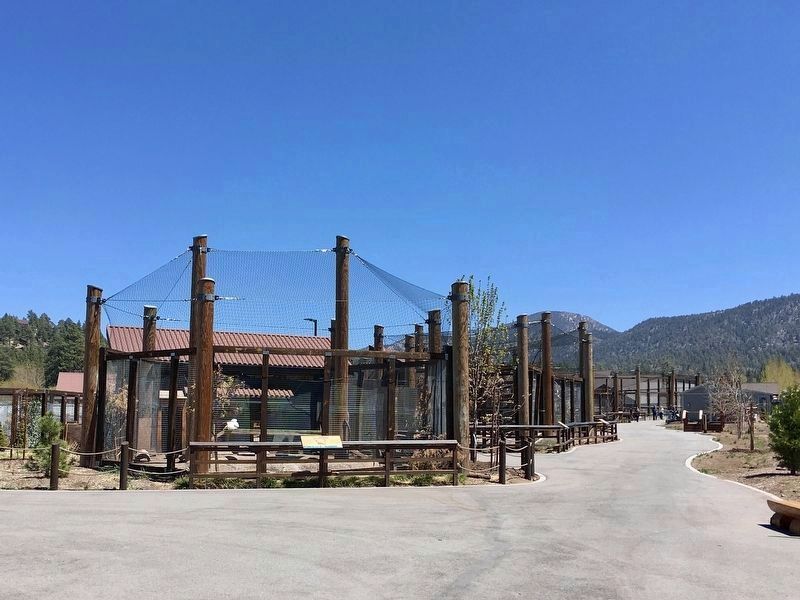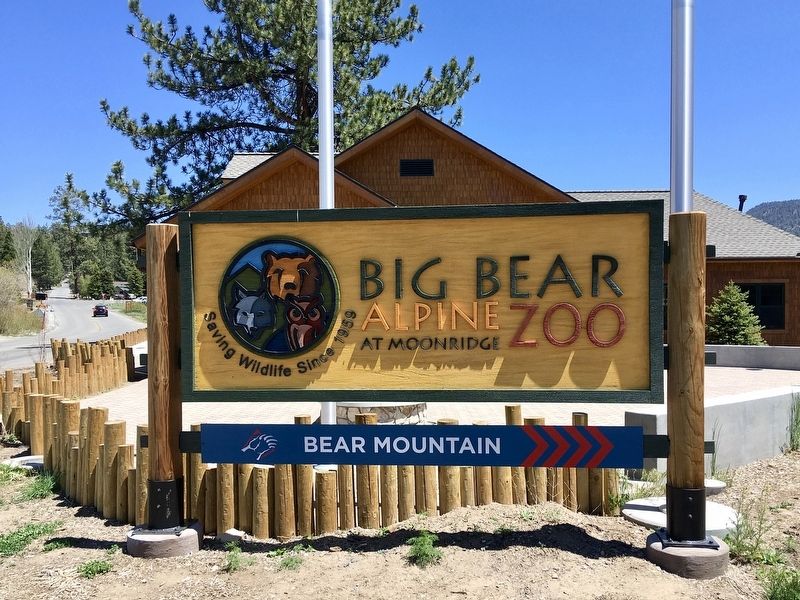Near Big Bear Lake in San Bernardino County, California — The American West (Pacific Coastal)
Grizzly Come Home Campaign
Big Bear Alpine Zoo
In January 1996: A family of "Three Strikes" Grizzly Bears were captured outside of Yellowstone National Park. US Fish and Wildlife Bear Management guidelines directed the rangers to either find them a permanent home in a zoological facility within 24 hours of capture or they must be dispatched. Woodland Zoo in Seattle Washington offered the bears a temporary home until a permanent home was found. Big Bear Alpine Zoo had the space and interest in acquiring the bears. The Friends of the Big Bear Alpine Zoo were charged with raising $55,000 in six weeks to bring this family of Grizzly Bears to Big Bear. Fundraising was a success, mainly through the Adopt a Brick Program.
Overall, the Friends raised a total of $108,000 as well as received donated goods. The Grizzly Bear Family, Tutu, Ayla, and Harley arrived at their new home on May 10, 1996.
Grizzly Bear
When Man Meets Animal
Grizzly bears, a sub-species of the brown bear, once roamed much of western North America and the Great Plains. Habitat loss due to logging, mining, and spreading human development cause bears and humans to come into contact. Early European settlers hunted grizzly bears, eliminating them from much of its original range. Today, roads pose a dangerous threat to grizzly bears. Many roads now transect historic bear habitat and in order for bears to move between wilderness corridors, they must cross the roads often heavily traveled by vehicles.
Special Adaptations
Grizzly bears are well adapted to survive seasonal changes. Highly intelligent with an incredible sense of smell, grizzlies can detect food from great distances. During warmer months, they eat massive amounts of food, eating everything from fruits, berries, nuts, leaves, insects, and a variety of animals in order to store enough fat to live off during the winter when food is scarce. During fall, grizzly bears use their long claws and strong shoulders to dig dens, which they use to hibernate in during the winter months. Hibernation allows the grizzly bear to conserve energy during the lean winter months.
Erected by Big Bear Alpine Zoo.
Topics. This historical marker is listed in these topic lists: Animals • Education. A significant historical month for this entry is January 1996.
Location. 34° 14.265′ N, 116° 52.008′ W. Marker is near Big Bear Lake, California, in San Bernardino County. Marker can be reached from the intersection of Club View Drive and Moonridge Road. Touch for map. Marker is at or near this postal address: 747 Club View Dr, Big Bear Lake CA 92315, United States of America. Touch for directions.
Other nearby markers. At least 8 other markers are within 6 miles of this marker, measured as the crow flies. Woodland Club Caddy Shack (approx. 2.2 miles away); Holcomb Valley (approx. 2.3 miles away); 5 Stamp Mill (approx. 2.3 miles away); Main Museum Building (approx. 2.3 miles away); Big Bear Valley (approx. 2.4 miles away); Big Bear Solar Observatory (approx. 3˝ miles away); Bellevill Holcomb Valley (approx. 4˝ miles away); Jenks Lake (approx. 5.1 miles away). Touch for a list and map of all markers in Big Bear Lake.
Also see . . . Big Bear Zoo. (Submitted on May 13, 2022.)
Credits. This page was last revised on May 29, 2022. It was originally submitted on May 13, 2022, by Craig Baker of Sylmar, California. This page has been viewed 171 times since then and 21 times this year. Photos: 1, 2, 3, 4, 5, 6. submitted on May 13, 2022, by Craig Baker of Sylmar, California.
